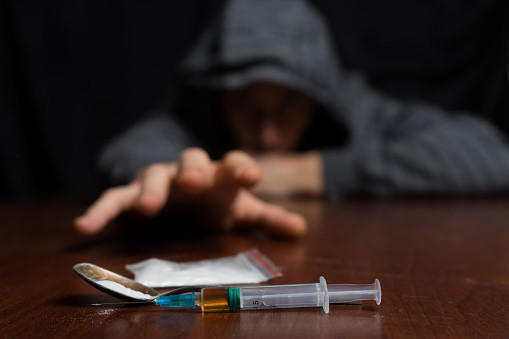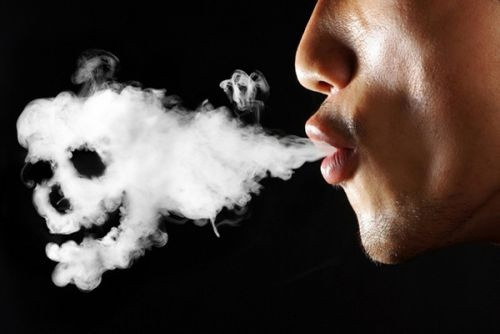Definisi
Gangguan mental dan perilaku dapat disebabkan oleh obat-obatan, salah satunya dari kelompok sedatif, hipnotik, dan/atau anxiolitik. Kelompok obat-obatan ini memiliki tiga fungsi utama sesuai namanya, yaitu sedatif (menenangkan, menurunkan kegembiraan atau perasaan kesal), hipnotik (memicu tidur), dan anxiolitik (meredakan cemas). Obat-obatan ini kemudian dikelompokkan berdasarkan zat penyusunnya, yaitu benzodiazepin, mirip-benzodiazepin, karbamat, barbiturat, dan hipnotik mirip-barbiturat.
Penyebab
Obat-obatan ini bekerja dengan mempengaruhi senyawa kimia pada otak dan saraf (neurotransmiter) bernama gamma-aminobutyric acid (GABA). Secara umum, GABA berfungsi sebagai penghambat kerja saraf-saraf pada otak. Obat-obatan pada kelompok sedatif, hipnotik, dan ansiolitik biasanya digunakan untuk memperbanyak jumlah GABA pada otak. Pada orang-orang dengan kondisi seperti gangguan stres pascatrauma (post-traumatic stress disorder/PTSD), gangguan cemas, insomnia (sulit tidur), atau kondisi lainnya, kadar GABA pada otak menurun, sehingga orang-orang ini sulit merasa tenang atau sulit tidur. Oleh karena itu, obat-obatan tersebut diresepkan pada kondisi-kondisi ini.
Namun, apabila digunakan dalam jangka waktu panjang, obat-obatan ini semakin tidak berefek pada jumlah GABA pada otak. Hal ini terjadi karena sel-sel otak menoleransi obat-obatan ini, sehingga sel membutuhkan dosis lebih tinggi untuk menciptakan efek yang sama. Hal ini pula yang menyebabkan ketergantungan pada obat-obatan ini.
Faktor Risiko
Obat-obatan ini biasanya digunakan pada kelompok gangguan cemas, termasuk gangguan panik dan fobia, gangguan terkait stres seperti PTSD, serta gangguan tidur. Obat-obatan ini paling banyak diresepkan pada orang berusia 60-70 tahun, sementara penggunaannya di luar kepentingan pengobatan (rekreasi) terbanyak pada usia 26-35 tahun. Kebanyakan pengguna obat-obatan ini di luar resep dokter adalah laki-laki. Sementara itu, perempuan lebih banyak menyalahgunakan obat-obatan ini apabila diresepkan oleh dokter. Tidak hanya itu, ketersediaan obat-obatan ini di masyarakat sebanding dengan banyaknya orang yang menyalahgunakan obat.
Gejala
Gangguan mental dan perilaku akibat penggunaan sedatif, hipnotik, dan ansiolitik dapat terdiagnosis apabila penggunaan obat-obatan ini dalam periode 12 bulan menyebabkan:
- Obat sedatif, hipnotik, atau ansiolitik dikonsumsi dalam dosis yang lebih besar atau digunakan dalam jangka waktu yang lebih panjang daripada biasanya
- Ada keinginan dan kegagalan usaha untuk menurunkan atau mengontrol penggunaan obat-obatan tersebut secara menetap
- Banyak waktu yang dihabiskan aktivitas untuk melakukan aktivitas terkait mendapatkan obat-obatan tersebut, atau untuk pulih dari efeknya
- Keinginan dan hasrat yang sangat besar untuk menggunakan obat-obatan tersebut
- Penggunaan obat secara berulang menyebabkan kegagalan pemenuhan kewajiban pekerjaan, sekolah, atau rumah tangga (misalnya sering tidak masuk kerja/sekolah, diskors atau dikeluarkan dari sekolah, serta pengabaian anak dan rumah tangga)
- Meneruskan penggunaan obat meskipun memiliki masalah sosial atau hubungan dengan orang lain yang disebabkan atau dipicu oleh efek obat-obatan (misalnya bertengkar hingga kekerasan fisik)
- Aktivitas sosial, pekerjaan, dan rekreasi yang penting ditinggalkan atau menurun akibat penggunaan obat
- Menggunakan obat-obatan pada situasi berbahaya (misalnya menyetir atau bekerja dengan mesin)
- Penggunaan obat-obatan diteruskan meskipun mengetahui bahwa masalah fisik, psikologis, dan sosial disebabkan oleh penggunaan obat-obatan
- Membutuhkan dosis yang lebih tinggi untuk mencapai efek yang sama
Biasanya, efek-efek ini baru akan muncul setelah satu bulan penggunaan obat secara rutin. Obat-obatan ini dapat menyebabkan gejala sebagai berikut:
- Mengantuk
- Kesulitan pengambilan keputusan
- Keterampilan motorik yang menurun
- Amnesia anterograde (kesulitan mempelajari informasi baru, sementara informasi sebelumnya tetap diingat)
- Bicara melantur
Apabila obat-obatan ini diberhentikan penggunaannya secara mendadak, dapat muncul gejala yang disebut sebagai sakau atau gejala withdrawal, yaitu:
- Berkeringat banyak
- Detak jantung meningkat
- Tangan gemetaran
- Sulit tidur
- Mual dan muntah
- Halusinasi penglihatan, sentuhan, atau pendengaran (melihat, merasakan, atau mendengar sesuatu yang tidak ada)
- Cemas
- Kejang
Diagnosis
Diagnosis gangguan mental dan perilaku akibat penggunaan sedatif, hipnotik, dan ansiolitik dapat terdiagnosis lewat pemeriksaan langsung dan laboratorium. Gangguan mental dan perilaku ini dapat disebabkan tidak hanya oleh penggunaan obat-obatan, tetapi juga akibat memberhentikan obat-obatan tersebut secara tiba-tiba.
Biasanya, dokter akan melakukan pemeriksaan fisis dan pemeriksaan mental untuk menentukan kondisi ini. Gejala-gejala penggunaan obat-obatan tersebut biasanya sama dengan efek obat-obatan yang digunakan, sementara gejala withdrawal berlawanan dengan efek obat-obatan.
Apabila penderita pertama kali ke dokter (terutama IGD), kemungkinan kondisi yang menyerupai gangguan mental dan perilaku ini cukup banyak, sehingga pemeriksaan laboratorium diperlukan untuk menyingkirkan kemungkinan kondisi-kondisi tersebut. Pemeriksaan laboratorium yang dapat dilakukan berupa pemeriksaan darah lengkap, pemeriksaan kencing (urinalisis), pemeriksaan hati, pemeriksaan ginjal, analisis gas darah, pemeriksaan hormon tiroid, serta pemeriksaan toksikologi NAPZA. Pemeriksaan lainnya seperti elektrokardiografi (untuk memeriksa ritme listrik jantung) dan rontgen dada diperlukan untuk menyingkirkan kemungkinan kondisi-kondisi lainnya.
Tata Laksana
Tata laksana gangguan mental dan perilaku akibat penggunaan sedatif, hipnotik, dan ansiolitik dapat dilakukan secara rawat jalan atau rawat inap, tergantung kondisi penderita. Pada awalnya, penderita mungkin akan dirawat inap. Apabila penderita datang dalam kondisi keracunan (intoksikasi) akibat penggunaan berlebih atau sebaliknya, withdrawal, tata laksana medis awal diperlukan untuk menangani kondisi kegawatdaruratan yang mengancam nyawa. Setelahnya, tata laksana untuk menurunkan penggunaan obat-obatan perlu direncanakan, karena akan membutuhkan waktu berbulan-bulan hingga bertahun-tahun.
Dokter biasanya akan melakukan evaluasi menyeluruh untuk mengetahui masalah kejiwaan penderita di luar penggunaan obat-obatan. Setelah itu, penderita akan menjalani psikoterapi atau terapi berbicara dengan psikolog atau psikiater. Terapi ini bertujuan untuk memperkuat mekanisme penyesuaian (coping mechanism) agar tidak kembali mengonsumsi obat-obatan tersebut lagi.
Pemeriksaan kencing perlu dilakukan secara berkala untuk mengetahui adanya penggunaan obat-obatan secara sembunyi-sembunyi. Apabila penderita tiba-toba menggunakan obat-obatan kembali, hal ini bukanlah kegagalan terapi, tetapi sebuah tanda bahwa terapi perlu dilakukan lebih intens.
Terapi juga dapat melibatkan kerja sama dengan keluarga. Keluarga dapat membantu penderita dalam menjalankan rencana terapi jangka panjang. Bahkan, terapi yang dilakukan dengan bekerja sama dengan keluarga memiliki hasil yang lebih baik dibandingkan dengan terapi individu atau kelompok lainnya.
Komplikasi
Pengguna obat-obatan sedatif, hipnotik, dan ansiolitik dapat berhenti sepenuhnya selamanya, dapat kambuh setelah beberapa saat, atau bahkan tidak bisa lepas sama sekali dari obat-obatan tersebut seumur hidupnya. Namun, risiko untuk kecanduan atau kembali kecanduan (setelah berhenti) cukup tinggi pada obat-obatan ini.
Penggunaan obat-obatan ini untuk tujuan penyembuhan dan terkontrol memiliki risiko yang lebih rendah, namun tetap ada. Penggunaan obat-obatan ini dapat menyebabkan penurunan performa kerja dan belajar, serta memperburuk hubungan dengan orang lain di sekitar penderita. Selain itu, penggunaan obat-obatan tersebut dapat menyebabkan bahaya bagi orang lain apabila digunakan saat melakukan aktivitas berbahaya seperti menyetir atau bekerja dengan mesin. Apabila kadar obat di dalam tubuh terlalu tinggi, kerja saraf dapat tertekan sepenuhnya hingga menyebabkan henti napas, henti jantung, hingga kematian.
Pencegahan
Penggunaan sedatif, hipnotik, dan ansiolitik tidak dapat dicegah apabila seseorang memiliki kondisi yang memerlukan obat-obatan tersebut. Namun, apabila Anda harus mengonsumsi obat-obatan tersebut, pastikan Anda menaati anjuran dokter dan tidak minum obat tersebut secara berlebihan. Anda dapat berkonsultasi dengan dokter apabila efek obat mulai berkurang, karena dokter dapat menaikkan dosis secara lebih terkontrol. Selain itu, penggunaan obat-obatan ini tanpa alasan pengobatan paling berisiko terjadi pada remaja. Sebagai orang tua, Anda dapat mencegah anak-anak Anda dengan langkah sebagai berikut:
- Mengetahui setiap aktivitas anak
- Menerapkan peraturan dan konsekuensi, misalnya seperti meninggalkan pesta yang melibatkan penggunaan NAPZA dan menolak disetiri oleh orang yang sedang mabuk. Jika anak Anda melanggar, konsekuensi sebaiknya diberlakukan secara konsisten
- Mengenal teman-teman anak Anda. Jika teman-teman anak Anda menggunakan NAPZA, anak Anda mungkin mendapatkan tekanan untuk melakukan hal yang sama
- Menyediakan dukungan atas usaha anak Anda. Semakin akrab Anda dengan anak Anda, semakin rendah risiko anak untuk mengonsumsi NAPZA
- Memberikan contoh yang baik. Apabila Anda mengonsumsi alkohol, batas konsumsi Anda. Jika Anda mendapatkan pengobatan dengan obat-obatan yang berpotensi membuat kecanduan, Anda perlu mengonsumsi obat-obatan tersebut sesuai anjuran dokter
Kapan harus ke dokter?
Apabila Anda atau orang di sekitar Anda menggunakan obat-obatan sedatif, hipnotik, atau ansiolitik hingga menyebabkan masalah yang berarti pada pekerjaan, sekolah, dan rumah tangga, Anda dapat berkonsultasi dengan dokter. Semakin cepat kondisi tersebut ditangani, semakin banyak risiko yang dapat dihindari.
- dr Anita Larasati Priyono
American Psychiatric Association. (2013). Diagnostic and statistical manual of mental disorders (5th ed.). Arlington, VA.
Erlach, S. (2017). Sedative, Hypnotic, Anxiolytic Use Disorders: Background, Pathophysiology, Epidemiology. Retrieved 11 February 2022, from https://emedicine.medscape.com/article/290585-overview
Sedative, Hypnotic, and Anxiolytic-Related Disorders. (2022). Retrieved 11 February 2022, from https://www.psychologytoday.com/us/conditions/sedative-hypnotic-and-anxiolytic-related-disorders
Teen drug abuse: Help your teen avoid drugs. (2021). Retrieved 11 February 2022, from https://www.mayoclinic.org/healthy-lifestyle/tween-and-teen-health/in-depth/teen-drug-abuse/art-20045921





/62d244a608bfb.jpg)





